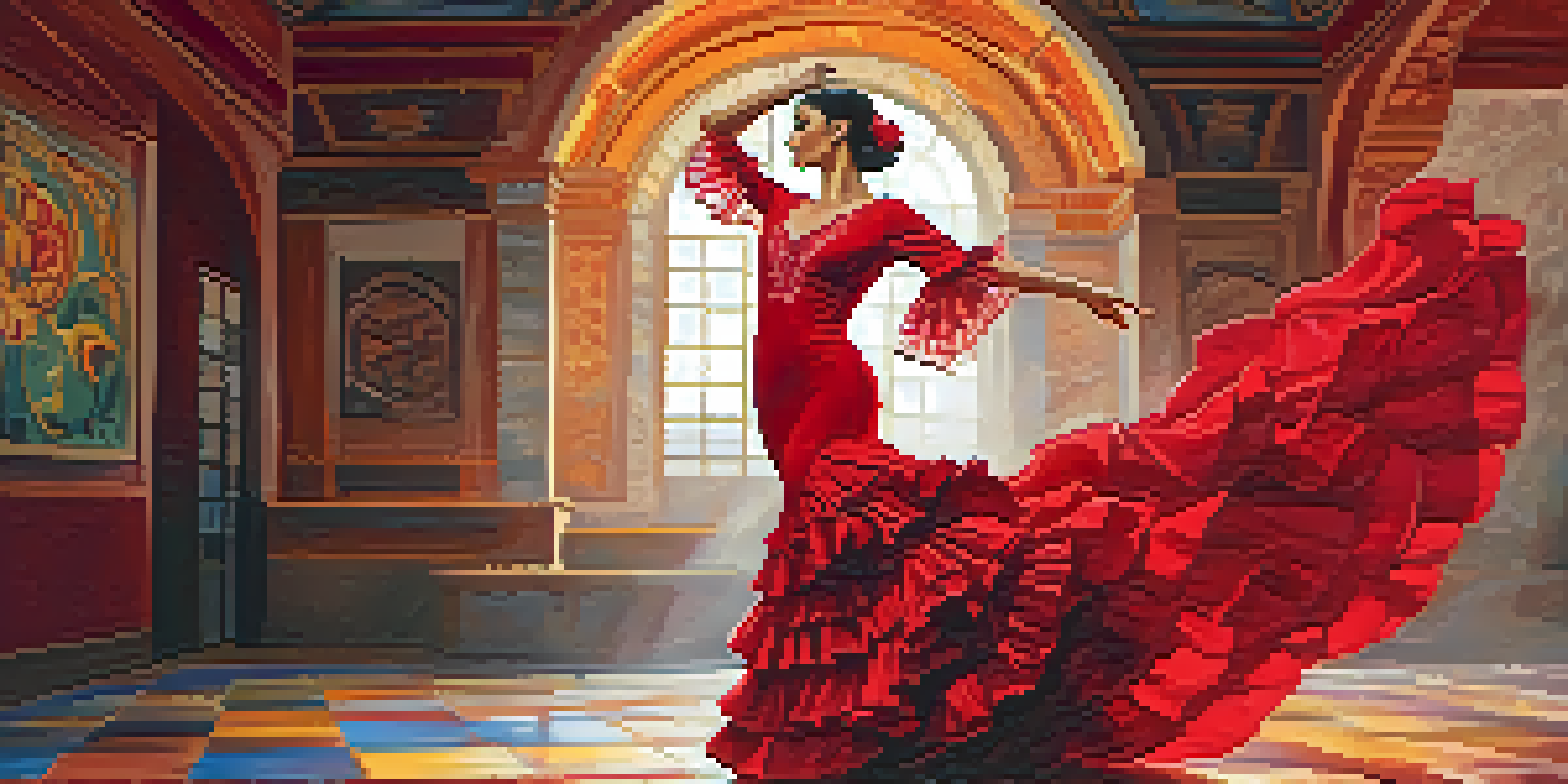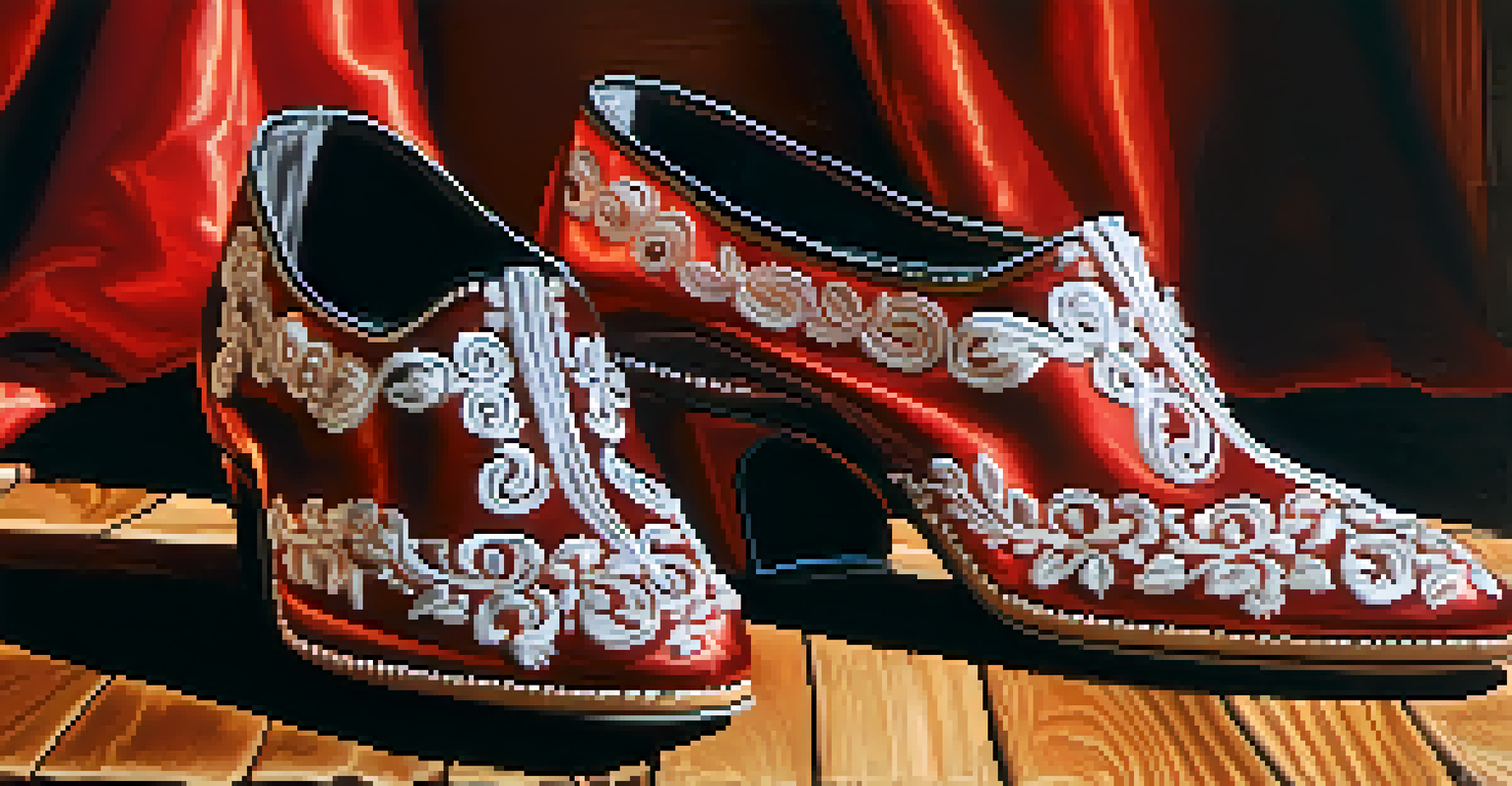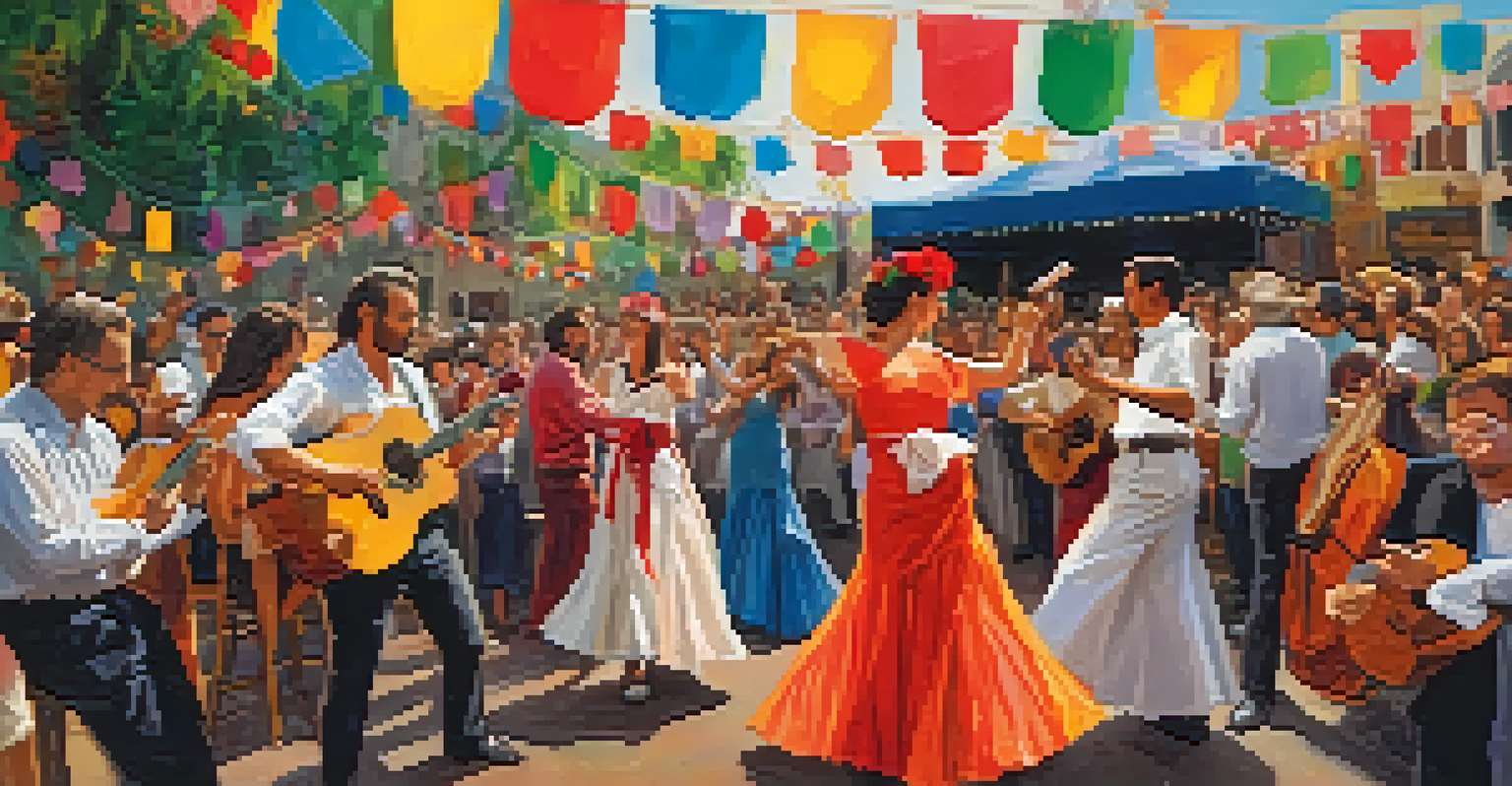The Roots of Flamenco: A Journey Through Its Rich History

The Origins of Flamenco: A Cultural Melting Pot
Flamenco, a passionate art form, traces its roots back to the Andalusian region of Spain. Its origins are a tapestry woven from diverse cultures, including the Gypsies, Moors, and Jews. This rich blend created a unique style that reflects the struggles and joys of the people. Imagine it as a vibrant stew, where each ingredient adds its own flavor to the mix.
Flamenco is the ultimate expression of the soul, a powerful reflection of the human experience.
The early influences of Flamenco can be seen in its music, dance, and even the emotional depth it conveys. Historians suggest that the art form began to take shape in the 18th century, although its true beginnings may be much older. This period marked the fusion of various musical traditions, leading to the distinctive sounds we associate with Flamenco today.
As we delve deeper into Flamenco's history, it's essential to recognize that this art form is not static; it evolves with each generation. The passion and emotion of Flamenco resonate through its rhythms, making it a living expression of the culture from which it sprang.
The Influence of the Gypsies on Flamenco
The Romani people, commonly referred to as Gypsies, played a pivotal role in shaping Flamenco. Their arrival in Spain during the 15th century brought new musical elements and a unique performance style. This influence can be seen in the intricate footwork and emotive expressions that define Flamenco dance.

Gypsies infused Flamenco with a sense of freedom and improvisation, allowing performers to express their emotions authentically. This improvisational aspect makes each performance unique, as artists draw on their personal experiences and the audience's energy. It’s akin to a conversation, where each dancer and musician contributes to a dynamic exchange.
Flamenco's Cultural Roots
Flamenco is a rich art form that combines influences from Gypsies, Moors, and Jews, reflecting the diverse struggles and joys of the Andalusian people.
Moreover, the Gypsy community's emphasis on storytelling has enriched Flamenco's lyrical content. Songs often depict tales of love, loss, and resilience, resonating deeply with audiences. The connection between the performer and the story they tell is what makes Flamenco a truly immersive experience.
The Role of Flamenco in Spanish Society
Flamenco has always held a special place in Spanish culture, serving as a means of expression and community bonding. Historically, it was performed at social gatherings, festivals, and family celebrations, bringing people together through music and dance. This communal aspect fosters a sense of belonging and cultural identity among participants.
Every dance is a story, and Flamenco tells the tales of passion, pain, and resilience.
In many ways, Flamenco acts as a mirror reflecting the societal changes in Spain. From its humble origins to its rise as a global phenomenon, the art form has adapted while retaining its core values. Think of it as a river that flows through time, absorbing new currents while remaining true to its source.
Today, Flamenco is celebrated not just in Spain but around the world, showcasing its universal appeal. As it crosses borders, it invites diverse interpretations, enriching its legacy. This adaptability is a testament to Flamenco's enduring relevance in an ever-changing cultural landscape.
The Evolution of Flamenco Music and Dance
Flamenco is characterized by its unique musical structures, which consist of various styles known as 'palos.' Each palo has its own rhythm, mood, and emotional intensity, providing performers with a rich palette to draw from. It's like a painter with a vast array of colors, each hue representing a different emotion or story.
Over the years, Flamenco has evolved, incorporating elements from other musical genres such as jazz and rock. This fusion has given rise to innovative interpretations that appeal to new audiences while preserving traditional roots. Imagine a classic recipe being reimagined with modern ingredients yet still retaining its original essence.
Global Influence and Recognition
Recognized as an Intangible Cultural Heritage by UNESCO, Flamenco has transcended its origins to inspire artists and audiences worldwide.
The dance component of Flamenco is equally dynamic, with styles ranging from the graceful to the intensely passionate. Each dancer brings their individual flair, making every performance a unique experience. This ever-evolving nature of Flamenco continues to inspire artists and captivate audiences worldwide.
Flamenco's Global Influence and Recognition
Flamenco has transcended its Andalusian origins to become a global phenomenon, inspiring artists and audiences around the world. The art form's expressive nature resonates deeply, making it a powerful medium for cultural exchange. Think of it as a bridge connecting diverse cultures through the universal language of music and dance.
International festivals and performances showcase the beauty and diversity of Flamenco, attracting fans from all walks of life. These events celebrate not only the traditional aspects but also the modern interpretations that continue to emerge. The growing interest in Flamenco has led to collaborations with artists from various genres, further enriching its global appeal.
In 2010, Flamenco was recognized as an Intangible Cultural Heritage by UNESCO, highlighting its significance in preserving cultural traditions. This acknowledgment has helped to elevate Flamenco's status on the world stage, ensuring that its roots are honored while it continues to evolve.
The Significance of Costumes in Flamenco
Costumes play a crucial role in Flamenco, enhancing the visual impact of performances and reflecting the culture's vibrancy. Traditional attire often includes colorful dresses for women adorned with ruffles and intricate embroidery, while men typically wear fitted pants and shirts. These outfits not only look stunning but also allow for freedom of movement, essential for the energetic dance style.
The symbolism behind the costumes adds another layer to the performance. Each color and design can represent specific emotions or themes, allowing dancers to convey deeper narratives through their attire. For instance, a red dress may symbolize passion, while a black outfit can represent mourning or sorrow.
Evolution and Modern Adaptations
Flamenco continues to evolve with new generations exploring innovative interpretations while honoring its traditional roots.
As Flamenco continues to evolve, so do its costumes, with modern interpretations introducing new styles and materials. This fusion of tradition and innovation keeps the art form fresh and exciting. Ultimately, the costumes are not just clothing; they are an integral part of the Flamenco story.
Flamenco Today: A Living Tradition
Today, Flamenco remains a living tradition, constantly evolving while honoring its past. New generations of artists are exploring innovative ways to reinterpret traditional styles, ensuring that Flamenco remains relevant in contemporary culture. It's like a tree, with roots firmly planted in history, yet branches reaching for the sky, adapting to the winds of change.
The rise of digital platforms has also played a significant role in Flamenco's resurgence. Online performances and tutorials have made the art form accessible to a global audience, fostering a new appreciation for its intricacies. This digital age allows for greater collaboration and sharing of ideas among artists worldwide.

As we look to the future, the essence of Flamenco—its passion, emotion, and connection—will undoubtedly continue to thrive. Each performance, whether traditional or modern, is a testament to the resilience and adaptability of this beautiful art form, ensuring that its roots remain strong while it grows towards new horizons.